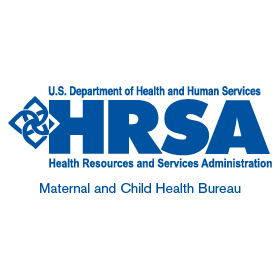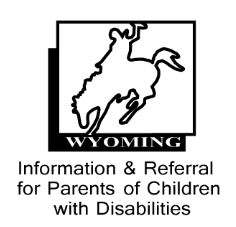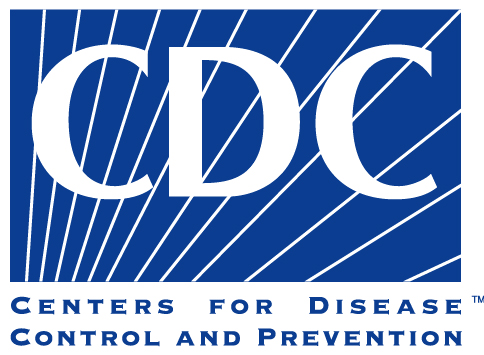Infant Hearing Loss Facts
- Every day, 33 babies (or 12,000 each year) are born in the United States with permanent hearing loss. With 3 of every 1,000 newborns having a hearing loss, it is the most frequently occurring birth defect.
- In a 1988 report to Congress and the President, the Commission on Education of the Deaf estimated that in the United States, the average age that children with congenital hearing loss were identified was 2-1/2 to 3 years of age, with many children not being identified until 5 or 6 years of age. Early identification and management of hearing loss in infants is vital to their early learning experiences. An invisible handicap, hearing loss present at birth commonly went undetected until delays in language development became so acute that parents and professionals eventually were led to investigate a child’s hearing ability. Deprived of critical language learning opportunities by an unidentified hearing loss, most children with hearing loss experienced concomitant disruptions in social, emotional, cognitive, and academic growth.
- “If hearing impaired children are not identified early, it is difficult, if not impossible, for many of them to acquire the fundamental language, social, and cognitive skills that provide the foundation for later schooling and success in society.” The first years in a child’s life are critical to healthy brain development and future academic success. These years provide a window of opportunity with enormous implications for the rest of a child’s life. Research shows that high quality care and early learning experiences are linked to children’s success in school and in life, and save money by preventing future expenses for remedial education and life assistance.
- In 1993, a Consensus Panel convened by the National Institutes of Health concluded “that all infants should be screened for hearing impairment. . . . This will be accomplished most efficiently by screening prior to hospital discharge. . . . Infants who fail . . . . should have a comprehensive hearing evaluation no later than 3 months of age.
- The American Academy of Pediatrics, the American Academy of Audiology, the Joint Committee on Infant Hearing, and the National Association of the Deaf have recommended that all babies be screened for hearing loss before being discharged from the hospital at the time of their birth.
- “When early identification and intervention occurs, hearing impaired children make dramatic progress, are more successful in school, and become more productive members of society.”
- The practicability and cost-efficiency of hospital-based universal newborn hearing screening is demonstrated by the fact that 21 Wyoming birthing hospitals are operating successful universal newborn hearing screening programs. Wyoming has screened 98% of their newborns for hearing loss since 1998.
- By providing universal newborn hearing screening for the infants born in Wyoming hospitals since 1998, Wyoming has been recognized at the national level for the quality of the program. When lost to follow-up rates were threatening the continuance of programs in states across the country, Wyoming was recognized as having nearly a 100% follow-up rate for infants identified through the hearing screening program in Wyoming.
- The cost for hospital-based universal newborn hearing screening is relatively inexpensive. Using current technology, the cost ranges from $100-$120 per baby depending on the protocol and technology used.
- The cost per child identified with congenital hearing loss is about 1/10th the cost per child identified with PKU, hypothyroidism, or sickle cell anemia in metabolic disorder screening programs. Such metabolic disorder screening programs are required in all 50 states.
- Research has compared children with hearing loss who receive early intervention before 6 months of ages versus after 6 months of age. By the time they enter first grade, children identified by 6 months of age and entered into early intervention are 1-2 years ahead of their later-identified peers in language, cognitive, and social skills.
- Infants with hearing loss can be fit with amplification before they are 1 month old. With appropriate family-centered intervention, typical language, cognitive, and social development for such infants is likely. Wyoming Child Development Centers are currently providing individualized Early Intervention Services for infants, toddlers, and preschoolers identified with hearing loss.
- The evidence for the benefits, practicability, and cost-efficiency of universal newborn hearing screening is so compelling that Wyoming passed legislation requiring hospitals to screen all newborns for hearing loss in 1999.
- All babies should be screened for hearing loss in the birthing hospital, and comprehensive, family-centered service should be available for identified children and families. Such statewide early hearing detection and intervention programs are operational in Wyoming.
- If it remains undetected, even mild hearing loss or hearing loss in only one ear may have substantial detrimental consequences. For example, research shows that children with hearing loss in one ear are ten times as likely to be held back at least one grade compared to a matched group of children with normal hearing in both ears.
- Research shows that by the time a child with hearing loss graduates from high school, more than $400,000 per child can be saved in special education costs if the child is identified early and given appropriate educational, medical, and audiological services. These savings in special education costs will pay for universal newborn hearing screening many times over.
Fact Sheet References
- White, K. R. (October, 1997). The scientific basis for newborn hearing screening: Issues and evidence. Invited keynote address to the Early Hearing Detection and Intervention (EHDI) Workshop sponsored by the Centers for Disease Control and Prevention, Atlanta, Georgia.
- Commission on Education of the Deaf. (1988). Toward equality: Education of the deaf. Washington, DC: Author.
- U.S. Department of Health and Human Services (HHS). (1990). Healthy People 2000: National Health Promotion and Disease Prevention Objectives. Washington, DC: Public Health Service.
- National Institutes of Health (NIH). (1993). NIH Consensus Statement. Early identification of hearing impairment in infants and young children, 11(1), 1-24.
- U.S. Department of Health and Human Services (HHS). (1990). Healthy People 2000: National Health Promotion and Disease Prevention Objectives. Washington, DC: Public Health Service. National Institutes of Health (NIH). (1993). NIH Consensus Statement. Early identification of hearing impairment in infants and young children, 11(1), 1-24. American Academy of Pediatrics Task Force on Newborn and Infant Hearing. (1999). Newborn and Infant Hearing Loss: Detection and intervention. Pediatrics, 103(2), 527-530.
- U.S. Department of Health and Human Services (HHS). (1990). Healthy People 2000: National Health Promotion and Disease Prevention Objectives. Washington, DC: Public Health Service.
- White, K. R. (1997). Survey of UNHS programs. NCHAM World Wide Web site (www.usu.edu/~ncham/survey.html).
- Primus, Michael. (January 2005) Hearing Review: Newborn Screening Follow-up.
- Maxon, A. B., White, K. R., Behrens, T. R., & Vohr, B. R. (1995) Referral rates and cost efficiency in a universal newborn hearing screening program using transient evoked otoacoustic emissions (TEOAE), Journal of the American Academy of Audiology, 6, 271-277. White, K. R., Mauk, G. W., Culpepper, N. B., & Weirather, Y. (1998). Newborn hearing screening in the United States: Is it becoming the standard of care? In L. Spivak (Ed.), Universal newborn hearing screening (pp. 225-255). New York: Thieme. Grosse, S. (September, 1997). The costs and benefits of universal newborn hearing screening. Paper presented to the Joint Committee on Infant Hearing, Alexandria, VA. Mehl, A. L., & Thomson, V. (1998). Newborn hearing screening: The great omission. Pediatrics, 101(1), 1-6 (http://www.pediatrics.org/cgi/content/full/101/1/e4).
- Johnson, M. J., Maxon, A. B., White, K. R., & Vohr, B. R. (1993). Operating a hospital-based universal newborn hearing screening program using transient evoked otoacoustic emissions. Seminars in Hearing, 14(1), 46-56.
- Yoshinaga-Itano, C., Sedey, A., Apuzzo, M., Carey, A., Day, D., & Coulter, D. (July 1996). The effect ofearly identification on the development of deaf and hard-of-hearing infants and toddlers. Paper presented at the Joint Committee on Infant Hearing Meeting, Austin, TX. Moeller, M. P. (October 1996). Early intervention of hearing loss in children. Paper presented at Fourth International Symposium on Childhood Deafness, Kiawah Island, South Carolina.
- Harrison, M., & Roush, J. (1996). Age of suspicion, identification, and intervention for infants and young children with hearing loss: A national study. Ear and Hearing, 17, 55-62. Strong, C. J., Clark, T. C., & Walden, B. E. (1994). The relationship of hearing-loss severity to demographic, age, treatment, and intervention-effectiveness variables. Ear and Hearing, 15, 126-137.
- White, K. R. (1997). Legislative activities. NCHAM World Wide Web site (www.usu.edu/~ncham/legislative.html).
- White, K. R. (1997). Survey of UNHS programs. NCHAM World Wide Web site (www.usu.edu/~ncham/survey.html).
- Bess, F. H., & Tharpe, A. M. (1986). Case history data on unilaterally hearing-impaired children. Ear and Hearing, 7(1), 14-19.
- White, K. R., & Maxon, A. B. (1995). Universal screening for infant hearing impairment: Simple, beneficial, and presently justified. International Journal of Pediatric Otorhinolaryngology, 32, 201-211.




